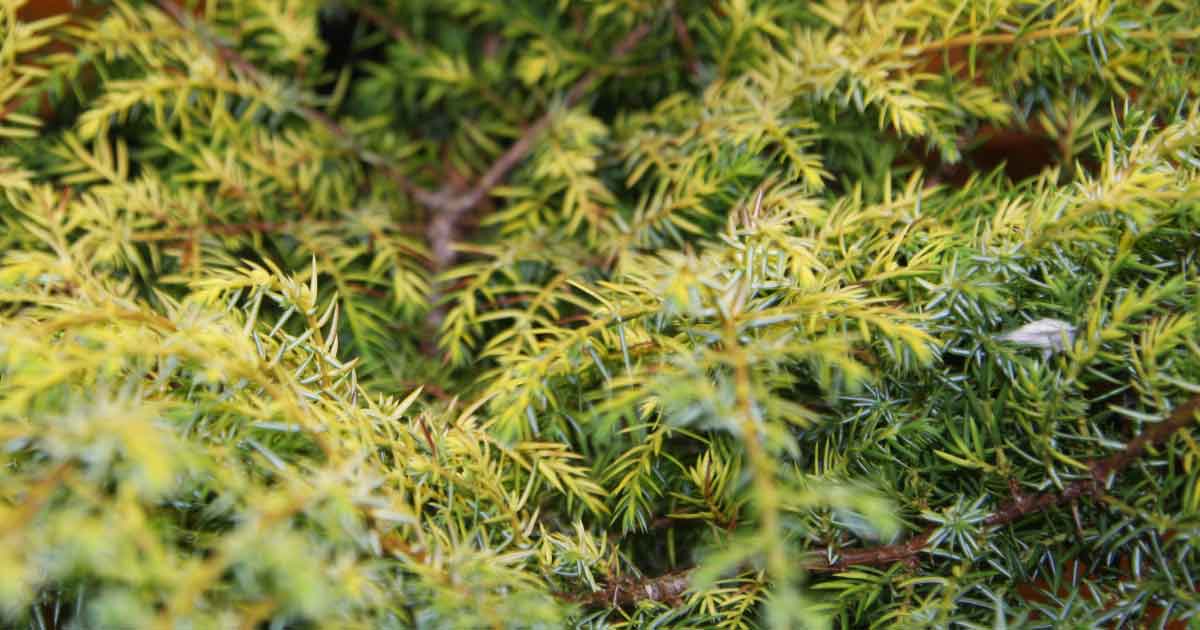The Common Juniper

This is the common Juniper, and it grows in Europe, North America as well as Asia. It is also the source of Juniper Berries which are used for making Gin.
As a garden plant it is versatile and easy care, it copes with a wide range of climate zones and does not require a lot of pruning. Other Juniper species have different characteristics and requirements.
Growth habit varies, from the low growing Jupinerus commutes ‘Repanda’ which makes a good ground cover plant reaching only around 2ft in height. To the tall columnar or ‘Pillar’ shaped Jupinerus communis ‘Hibernica’ which will reach 15ft (5m) over time.
General Care
Jupinerus communis does require full sun to maintain good foliage and good shape. It also requires a free draining soil.
Light
Sun for at least 6 hours a day will be needed to promote growth, dense foliage and prevent disease. In deep shade growth will sparse and stunted.
Temperature range
Low humidity is the key rather than temperature so USDA Zones 2 – 7 is a good indication. Try to provide good airflow to prevent problems in more humid areas.
Watering
Once established the common Juniper is considered drought tolerant. Water well through dry periods for the first 2 – 3 years. Mulch around the plant to maintain a cool moist root run.
Once established the common Juniper should require no regular watering at all.
Soil
This is a plant that will grow in poor soils, even rocky or sandy soils, however it will perform better in good fertile soil,
Fertiliser
Again once established this is plant that will not require additional fertiliser in average to good soils. In early stages of growth and in very poor soils an application of an organic type slow release fertiliser in spring can be beneficial
Juniperus communis Varieties
- Juniperus communis Oblonga Pendula – Small tree with weeping branches.
- Juniperus communis ‘Gold’ – Slow growing with golden foliage.
- Juniperus communis ‘Hornibrookii’ – Very low growing ground cover variety also suited to cloud pruning.
- Juniperus communis ‘Hibernica’ – The Irish Juniper as the name suggests, slow growing with a very upright habit.
- Juniperus communis ‘Corielogon’ – Another low growing variety with silver green foliage.
- Juniperus communis ‘Depressa Aurea’ – Low growing with foliage that changes from a pale green to yellow to a deeper golden tone in winter.
- Juniperus communis ‘Repanda’ – Reaches around 2 – 3 ft in height.In cooler climates the foliage turns to a bronze in winter.
Pests
Scale, Aphids and Juniper blight can all be issues. The first two controlled by using a horticultural oil. Blight is treated by hard pruning.
Problems
The only major problems are caused by overwatering and poor drainage, both of these can cause root rot and fungal disease.
Lack of light can cassette foliage to elongate or stretch, this is called etiolation.
We are asked
- Are Juniperus communis Berries Edible? Yes and no, they are used as flavouring for Gin, Meats such as Venison and sauces rather than eaten. The berries are actually very bitter and not eaten raw. Other Juniper species can be toxic.
- What is Juniper wood used for? Commonly used in craft, the wood is aromatic and long lasting.
Summary Information
- Botanical Name: Juniperus communis
- Common Name : Common Juniper
- Hardiness: USDA zones 2-7
- Height : 2ft to 15ft (3m) Varies depending on variety
- Light: Full to part sun
- Soil: Well-drained soil is important.
- Soil pH: Neutral
- Moisture : Once established reasonably drought tolerant if mulched well.
- Flowers: Small followed by berries.
- Foliage : Typical short needle like foliage, mid to deep green..
- Fertiliser; Fertilise in spring with a low nitrogen fertilizer.

